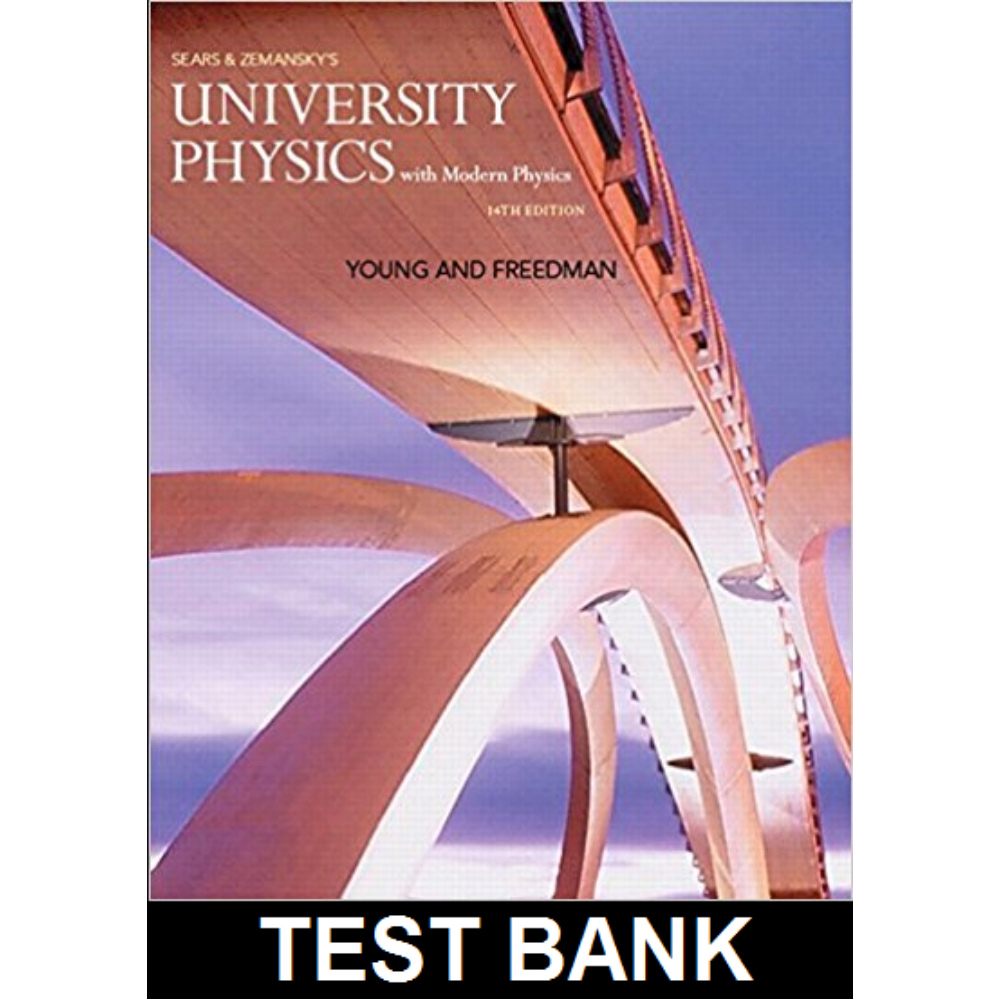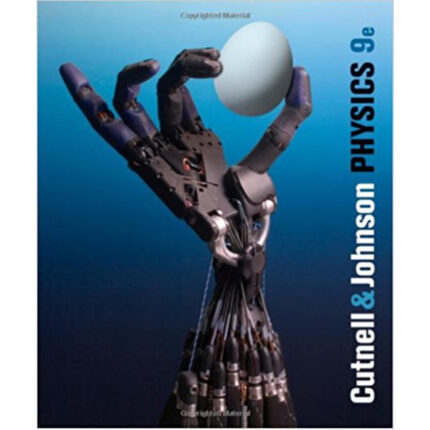University Physics With Modern Physics (14th Edition) – Young
MULTIPLE CHOICE. Choose the one alternative that best completes the statement or answers the question.
1) If the torque on an object adds up to zero
A) the object cannot be turning.
B) the object could be both turning and accelerating linearly.
C) the object is at rest.
D) the object could be accelerating linearly but it could not be turning.
E) the forces on it also add up to zero.
1)
Answer: B
2) A heavy boy and a lightweight girl are balanced on a massless seesaw. If they both
move forward so that they are one-half their original distance from the pivot point,
what will happen to the seesaw? Assume that both people are small enough compared
to the length of the seesaw to be thought of as point masses.
A) It is impossible to say without knowing the masses.
B) It is impossible to say without knowing the distances.
C) The side the boy is sitting on will tilt downward.
D) The side the girl is sitting on will tilt downward.
E) Nothing will happen; the seesaw will still be balanced.
2)
Answer: E
3) Tensile stress is
A) the ratio of elastic modulus to strain.
B) the applied force per cross-sectional area.
C) the ratio of the change in length to the original length.
D) the same as force.
E) the strain per unit length.
3)
Answer: B
4) Tensile strain is
A) the ratio of the change in length to the original length.
B) the applied force per cross-sectional area.
C) the same as force.
D) the stress per unit area.
E) the ratio of stress to elastic modulus.
4)
Answer: A
5) Two compressible solids are formed into spheres of the same size. The bulk modulus of
sphere two is twice as large as the bulk modulus of sphere one. You now increase the
pressure on both spheres by the same amount. As a result of the increased pressure,
how is the change in volume of sphere two (△V2) related to the change in volume of
sphere one (V1)?
A) ΔV2 = 4ΔV1
B) ΔV2 = 2ΔV1
C) ΔV2 = 1/2ΔV1
D) ΔV2 = ΔV1
E) ΔV2 = 1/4ΔV1
5)
Answer: C
6) Which one of the following stresses would be most likely to cause a bone to fracture?
A) compressive stress B) tensile stress
C) sheer stress D) bulk stress
6)
Answer: C
12) A nonuniform, 80.0-g, meterstick balances when the support is placed at the 51.0-cm
mark. At what location on the meterstick should a 5.00-g tack be placed so that the
stick will balance at the 50.0 cm mark?
A) 67.0 cm B) 16.0 cm C) 35.0 cm D) 66.0 cm E) 34.0 cm
12)
Answer: E
13) A 30.0-kg child sits on one end of a long uniform beam having a mass of 20.0 kg, and a
40.0-kg child sits on the other end. The beam balances when a fulcrum is placed below
the beam a distance 1.10 m from the 30.0-kg child. How long is the beam?
A) 1.98 m B) 2.12 m C) 2.07 m D) 1.93 m E) 2.20 m
13)
Answer: A













Reviews
There are no reviews yet.